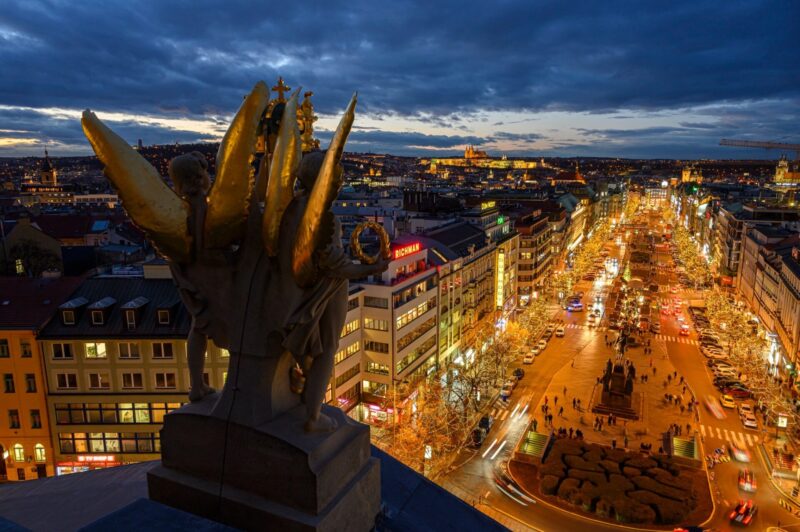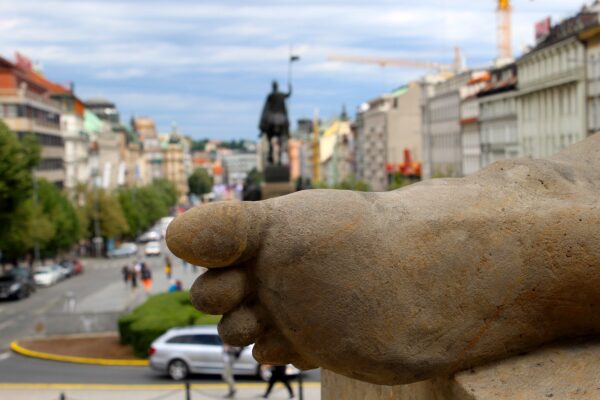Wenceslas Square
A few blocks south of the Museum of Communism lies Wenceslas Square & Národní muzeum and of course Nove Mesto. Wenceslas Square and Nove Mesto are two of the most important squares of the city. In the heart of Nové Mesto (New Town) the 750 meters long Wenceslas Square (Václavské Námestí) is in reality more of the main avenue today than a classic square.
It was established along with the rest of Nové Mesto by King Charles IV in 1348, a few months after his coronation as Bohemian King, according to his plan for a new city that would rise to the grandeur of Paris, the greatest of the European capitals at the time.
The rectangular square covers an area of 45.000 square meters in total and widens from 48 meters wide in the bottom part to 63 meters wide in its southeastern edge that slopes upward as we approach the towering Neo-Renaissance building of the National Museum that dominated the horizon.


The square is lined with beautiful Art-Nouveau & late Art Nouveau in the majority of buildings, a style that was extremely popular at the beginning of the 20th century and that most of them took their present form. However, we can also find buildings that follow the Neo-classicist, Neo-Renaissance, Neo-Baroque, and even Cubist & Czech functionalist styles.
The square was initially intended for trading horses and it was called accordingly for more than 500 years. The Horse Market changed into the more noble Wenceslas Square in 1848 during the Czech national revival. A few years later, in 1887, the construction of the 5.5 meters high (7.2 m with the pike) equestrian statue of the patron saint of Bohemia would seal the new name.
The monument, with the statue of St. Ludmilla on the left (when looking from the front), of St Agnes behind St. Wenceslas, St Prokop on the right front and behind it, the statue of St Adalbert was finally completed in 1924. Not far from the monument, in front of the National Museum, another more modest memorial in the form of a fallen cross honors the memory of a Czech student that set himself on fire right on the spot, to protest the Soviet occupation in 1969.



